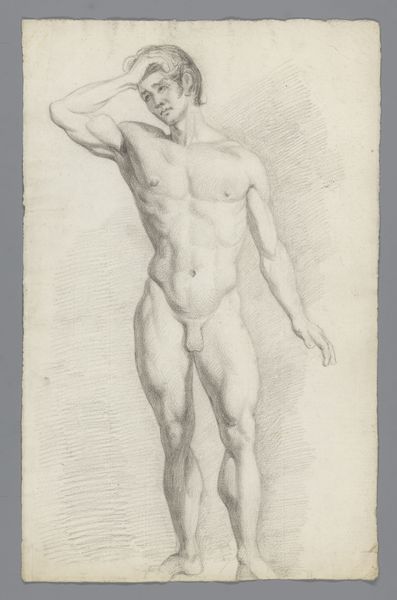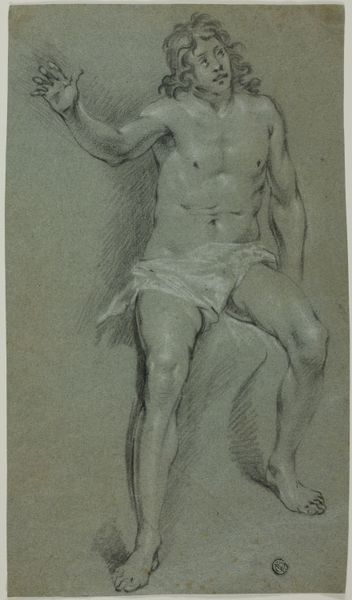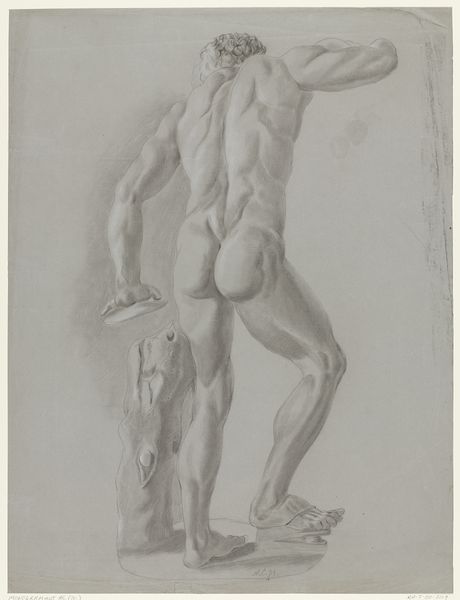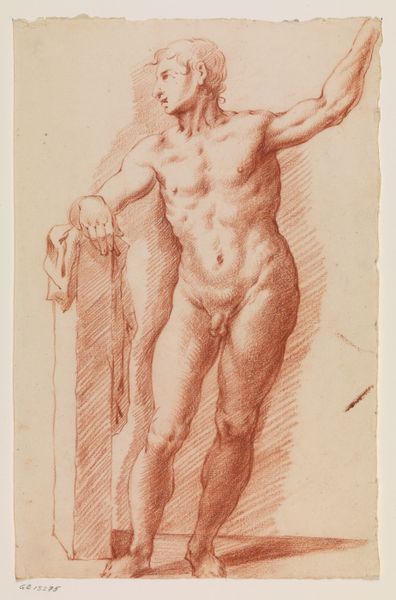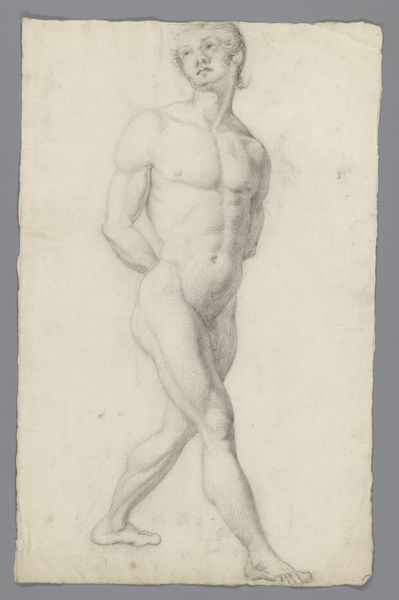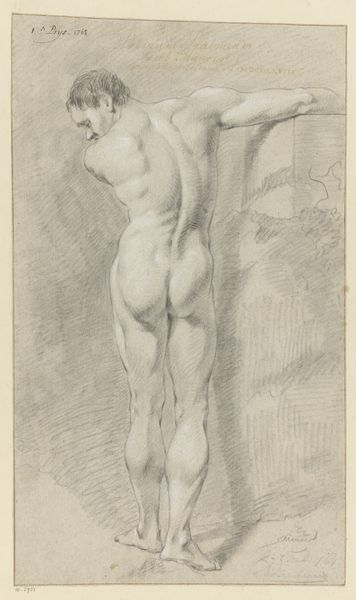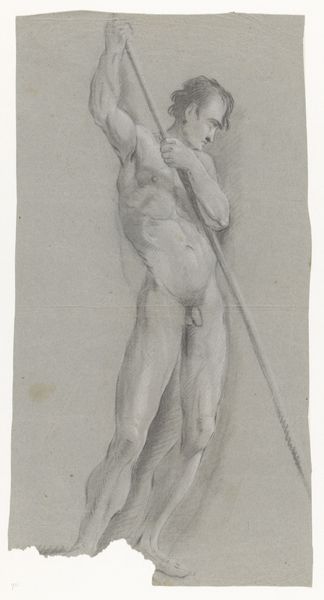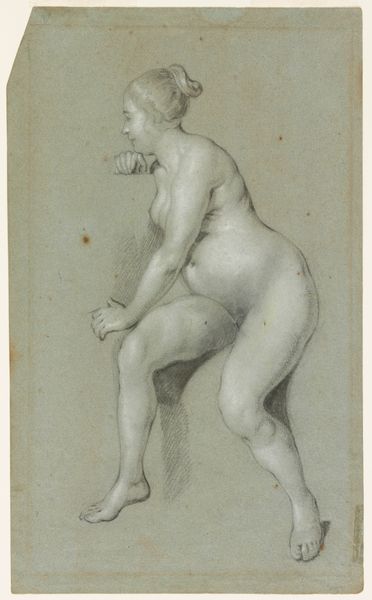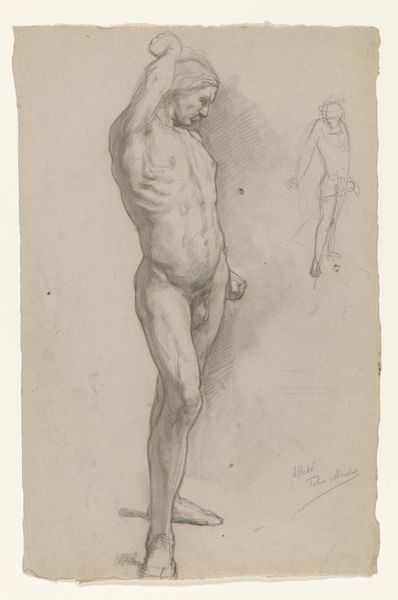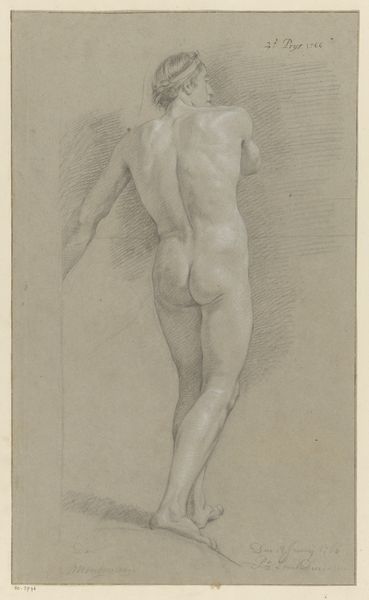
drawing, charcoal
#
drawing
#
charcoal drawing
#
mannerism
#
figuration
#
portrait drawing
#
charcoal
#
italian-renaissance
#
nude
Dimensions: 306 mm (height) x 205 mm (width) (bladmaal)
Editor: This is "St Sebastian," a charcoal drawing from sometime between 1548 and 1628 by Jacopo Palma il Giovane, currently housed at the Statens Museum for Kunst. It’s a study of a muscular, seminude man bound with his arm raised, and the dynamism in the pose is remarkable. How would you interpret this work, looking through a historian's lens? Curator: Well, seeing "St. Sebastian," I immediately think of its historical context and function. Drawings like this one weren't just art for art's sake; they were often preparatory studies. Palma’s studio would have relied heavily on these quick sketches. He was working in a very competitive visual culture. This depiction of Saint Sebastian speaks volumes about the politicization of the image. Why do you think the martyr was such a popular subject during the Renaissance? Editor: Perhaps the Church wanted to associate itself with strength, stoicism, or perhaps some patron personally identified with Sebastian. I'm also struck by the artist's choice of leaving much of the face unfinished. Curator: Exactly! This unfinished quality reveals so much about the production of art at the time. Also think about Mannerism's tendency toward the idealized, and consider the very public function of art at that moment. Artists were negotiating the visual landscape for various patrons. Do you see any implications for that public role here? Editor: It seems like the intention was to depict not necessarily human pain, but rather an idealized suffering – almost turning pain into a sort of triumphant aesthetic experience. It makes me wonder if its public would have really connected with this suffering. Curator: A powerful observation. We are led to wonder, wouldn’t we be? I think examining art in terms of its social and historical conditions adds depth to our understanding. It allows us to reflect not only on the artistic skill but also on the broader narratives surrounding the artwork and its role in shaping public perceptions and political agendas. Editor: I'll certainly consider how the original social context might influence the creation and the reading of the work!
Comments
No comments
Be the first to comment and join the conversation on the ultimate creative platform.
